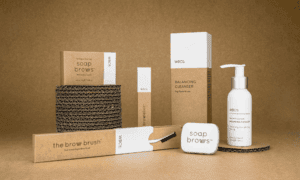Introduction:
In the competitive landscape of the industrial sector, effective marketing is crucial for success. Unlike consumer goods, marketing industrial products requires a unique set of strategies tailored to the specific needs and challenges of the B2B environment. In this comprehensive guide, we will delve into the intricacies of marketing industrial goods, exploring key strategies to enhance visibility, generate leads, and ultimately drive growth.
Understanding the Industrial Market:
Before delving into marketing strategies, it’s essential to have a solid understanding of the industrial market. Industrial goods encompass a wide range of products, from machinery and equipment to raw materials and components. The buyers in this market are often businesses looking to fulfill their operational needs, making the decision-making process more complex and rational compared to consumer goods.
1. Market Research and Target Audience Identification
a. Conducting in-depth market research:
Before developing any marketing strategy, thorough market research is paramount. Identify market trends, assess competitors, and understand the pain points and needs of your target audience. This information lays the foundation for a successful marketing campaign.
b. Segmentation and Targeting:
Industrial markets are diverse, and one size doesn’t fit all. Segment your target audience based on industry, size, location, and specific needs. Tailor your marketing approach to address the unique challenges faced by each segment, demonstrating a deep understanding of their requirements.
c. Building buyer personas:
Develop detailed buyer personas to humanize your target audience. Understand the roles and responsibilities of key decision-makers within organizations. This insight will guide your content creation and marketing messages, ensuring they resonate with the right stakeholders.
2. Establishing a Robust Online Presence
a. Optimizing Websites for Search Engines (SEO):
In the digital age, having a strong online presence is non-negotiable. Optimize your website for search engines to improve visibility. Conduct keyword research to identify relevant terms used by your target audience and incorporate them naturally into your website content.
b. Creating informative content:
Develop high-quality, informative content that addresses the pain points of your audience. This can include blog posts, whitepapers, case studies, and video content. Position your company as an industry expert by providing valuable insights and solutions to common challenges.
c. Utilizing social media platforms:
Leverage social media platforms to engage with your audience. Share industry updates, product highlights, and educational content. LinkedIn is particularly effective for B2B marketing, allowing you to connect with professionals in your industry and share thought-leadership content.
d. Investing in Paid Advertising:
Consider paid advertising to boost your online visibility. Google Ads and social media advertising can help target specific demographics and industries. Use analytics to measure the effectiveness of your campaigns and make data-driven adjustments.
3. Content Marketing and Thought Leadership
a. Creating educational content:
Develop content that educates your audience about industry trends, best practices, and innovative solutions. This positions your brand as a thought leader and builds trust with potential customers.
b. Implementing a Blogging Strategy:
Maintain a regular blogging schedule to keep your audience informed and engaged. Blog posts can cover a range of topics, from product updates to industry insights. Encourage comments and discussions to foster a sense of community around your brand.
c. Guest Blogging and Industry Collaborations:
Expand your reach by guest blogging on industry websites or collaborating with other businesses. This not only increases your visibility but also establishes credibility within your niche.
Lead generation and relationship building
a. Implementing Effective Lead Magnets:
Offer valuable resources, such as eBooks, webinars, or industry reports, to capture leads. Use these lead magnets strategically to collect contact information and nurture potential customers through the sales funnel.
b. Utilizing email marketing:
Develop targeted email campaigns to nurture leads and build relationships. Provide relevant content, product updates, and exclusive offers to keep your audience engaged. Personalize your emails based on the recipient’s industry and interests.
c. Networking and Industry Events:
Attend and participate in industry events, trade shows, and conferences. Networking provides valuable opportunities to connect with potential customers, partners, and industry influencers. Establishing a presence at such events enhances brand visibility and credibility.
Implementing Customer-Centric Strategies
a. Gathering and Showcasing Customer Testimonials:
Positive feedback from satisfied customers is a powerful marketing tool. Collect and showcase customer testimonials on your website, in marketing materials, and on social media. This builds trust and credibility with potential buyers.
b. Providing exceptional customer service:
Superior customer service is a key differentiator in the industrial sector. Ensure that your customer support team is responsive and knowledgeable. A positive customer experience not only leads to repeat business but also encourages word-of-mouth referrals.
c. Continuous Improvement Based on Customer Feedback:
Actively seek feedback from customers and use it to improve your products and services. Demonstrating a commitment to meeting customer needs and addressing concerns builds long-term loyalty.
Conclusion
In industrial goods marketing, a multifaceted approach is essential. By conducting thorough market research, establishing a robust online presence, and prioritizing customer-centric strategies, businesses can position themselves as industry leaders. Remember, success in marketing industrial goods is an ongoing process that requires adaptability, innovation, and a deep understanding of your target audience.



































